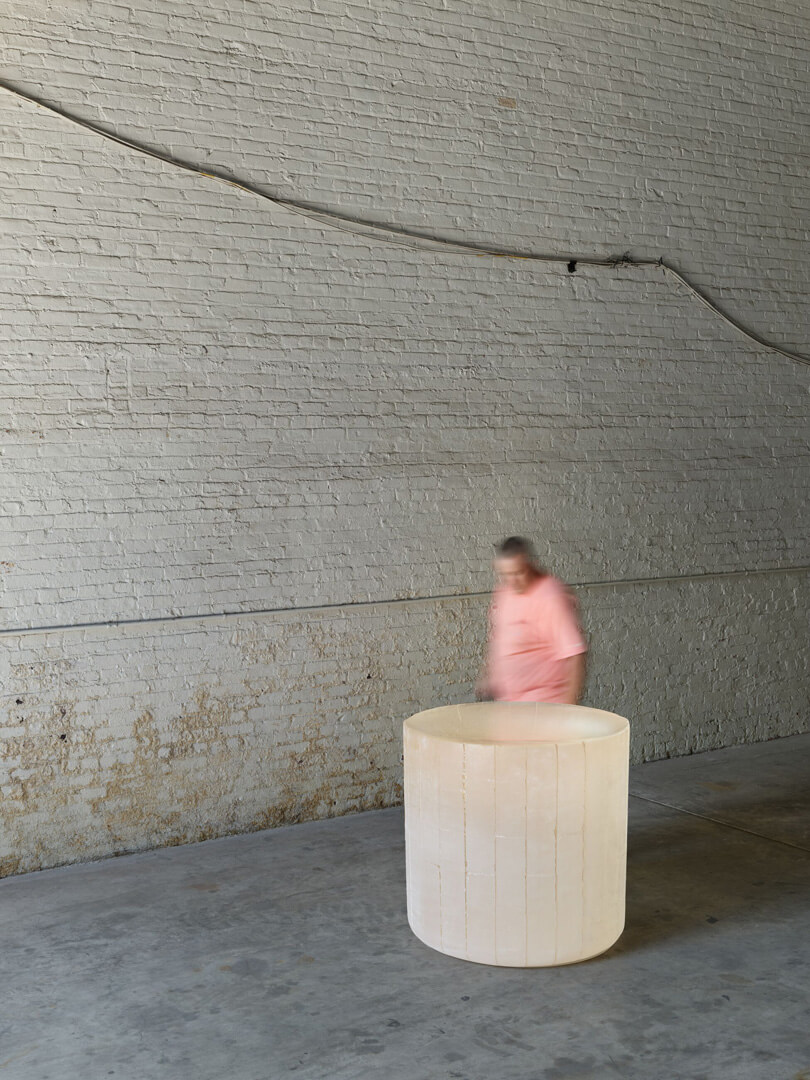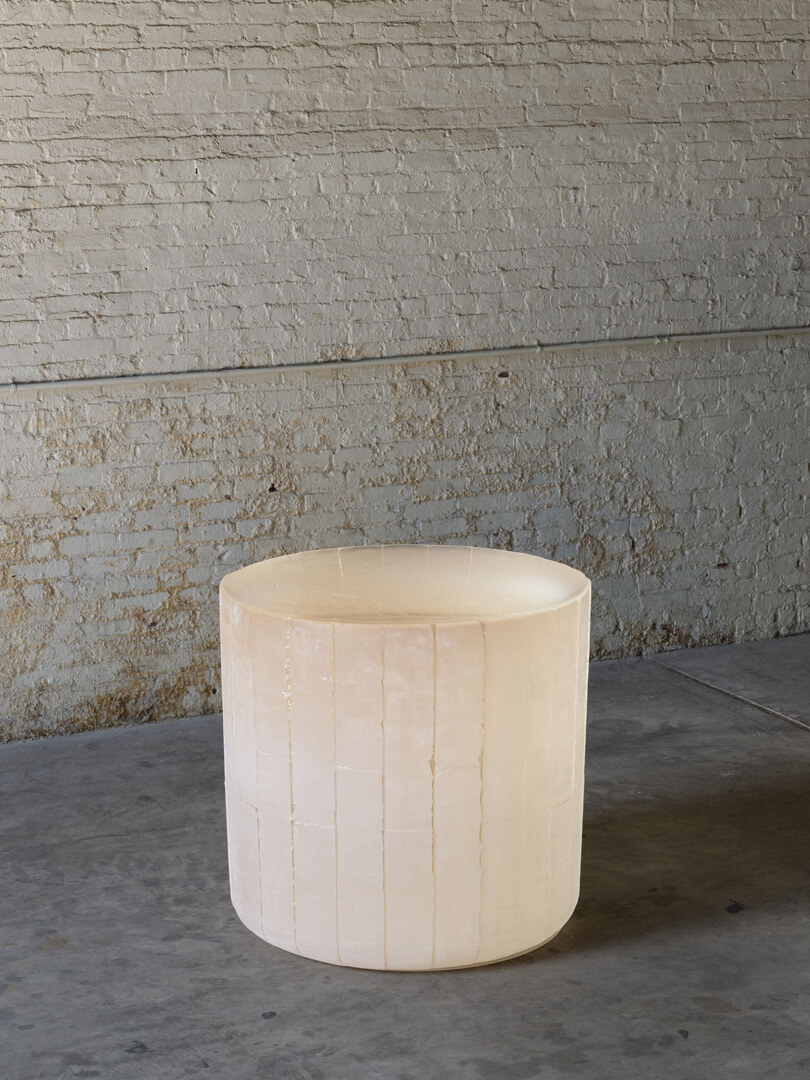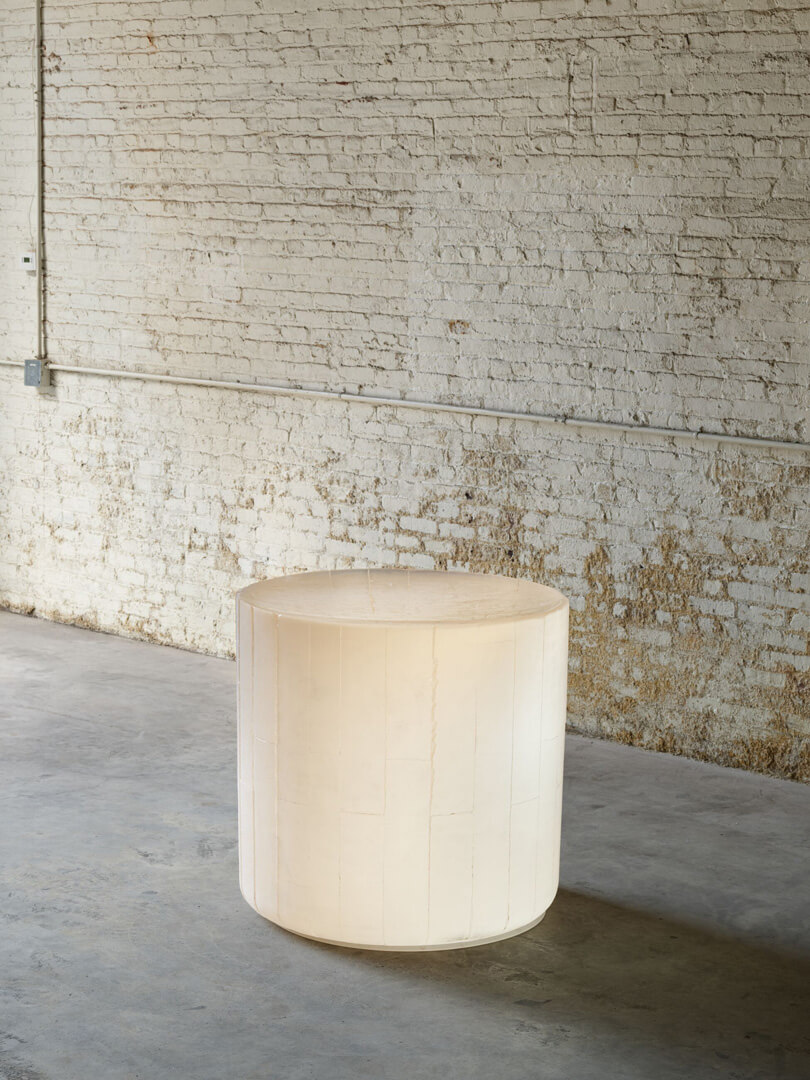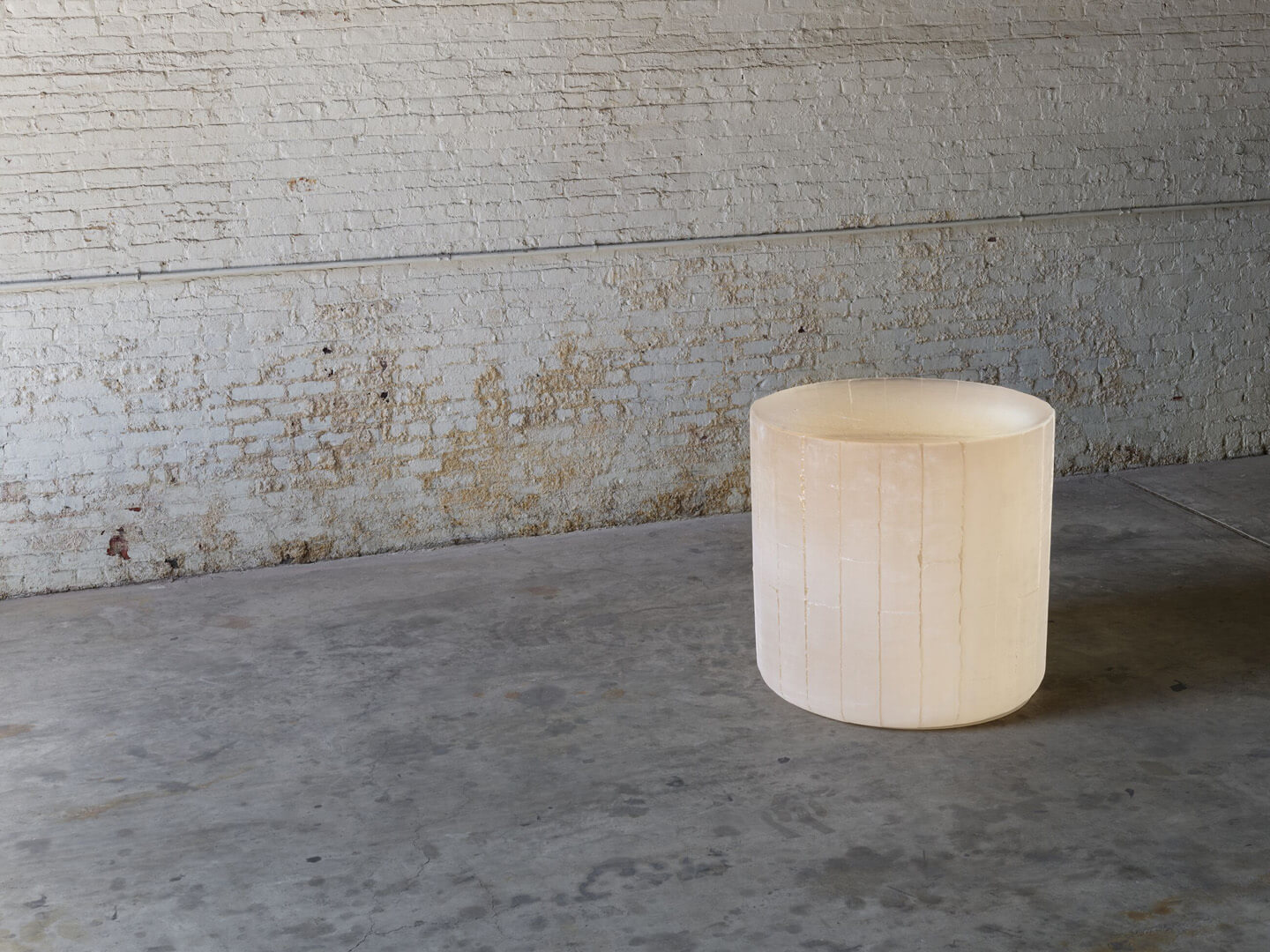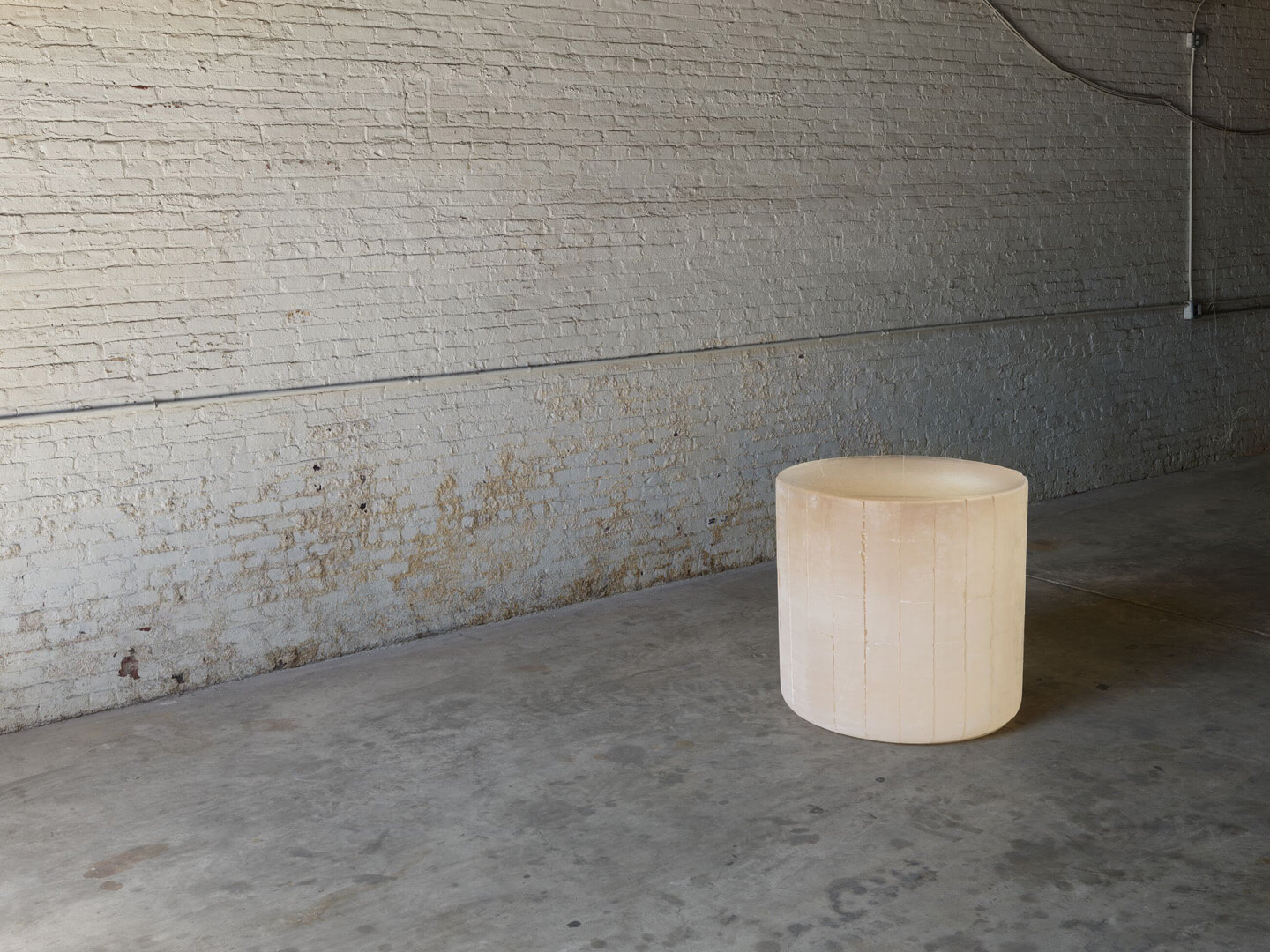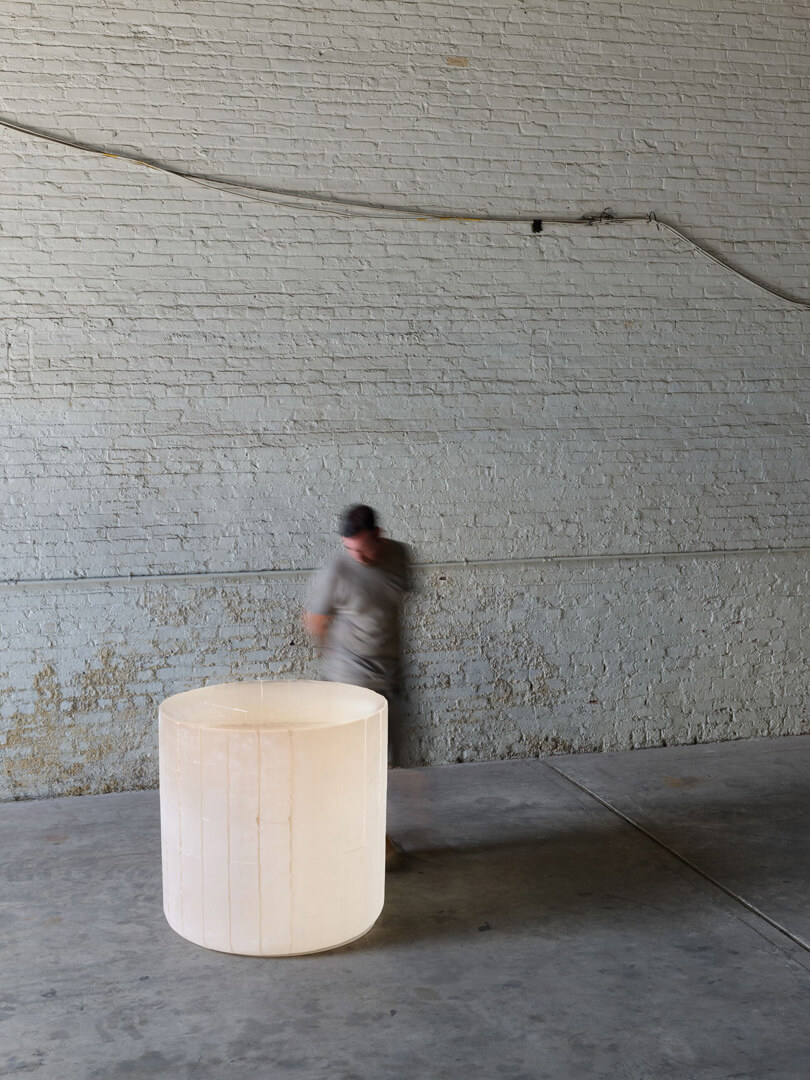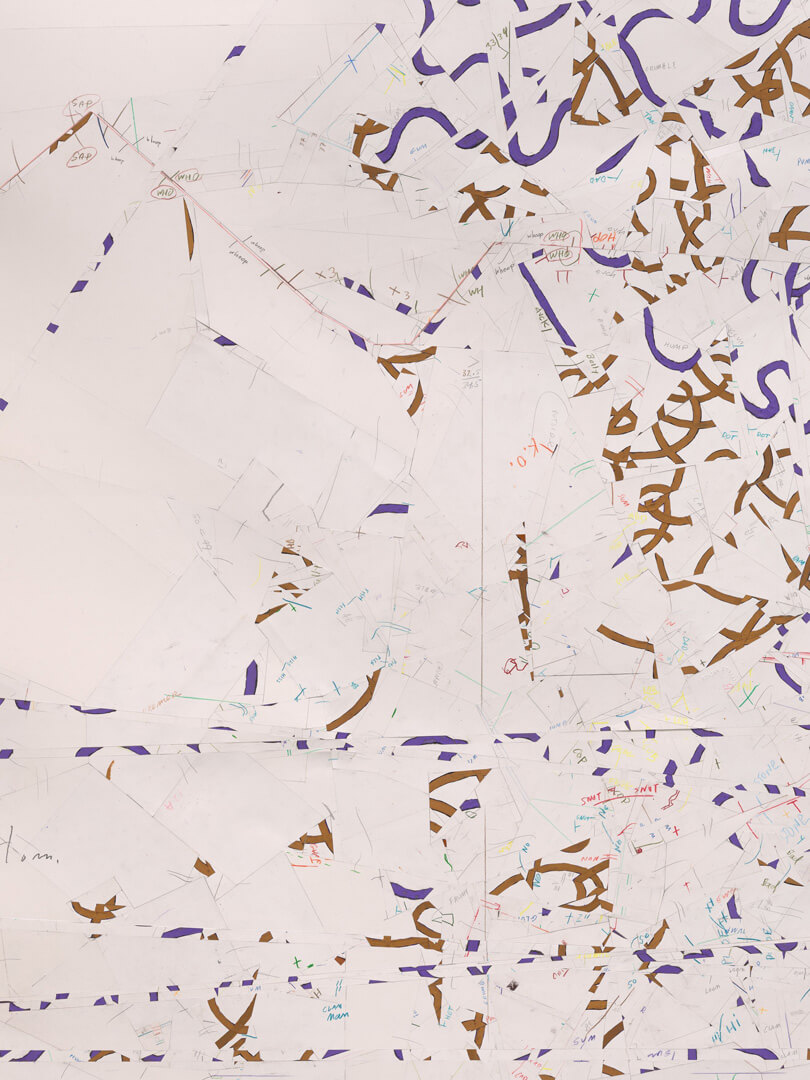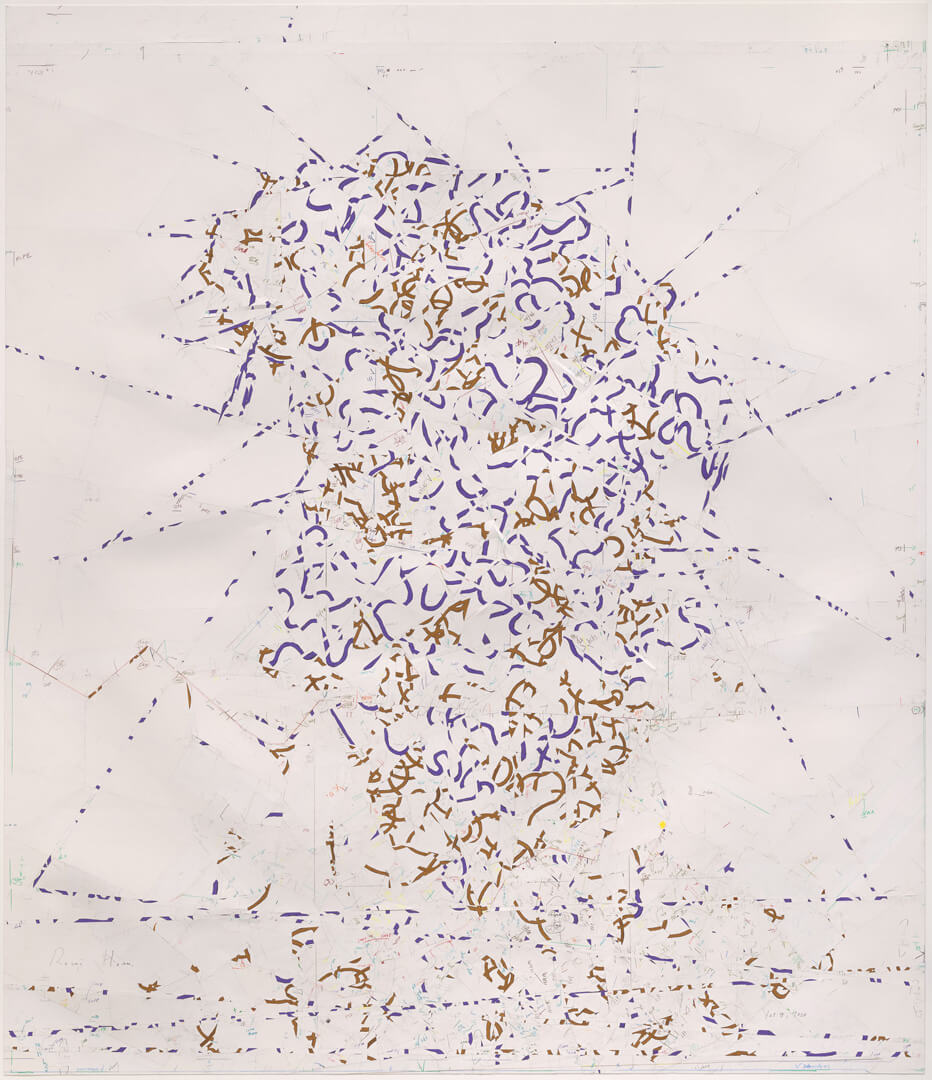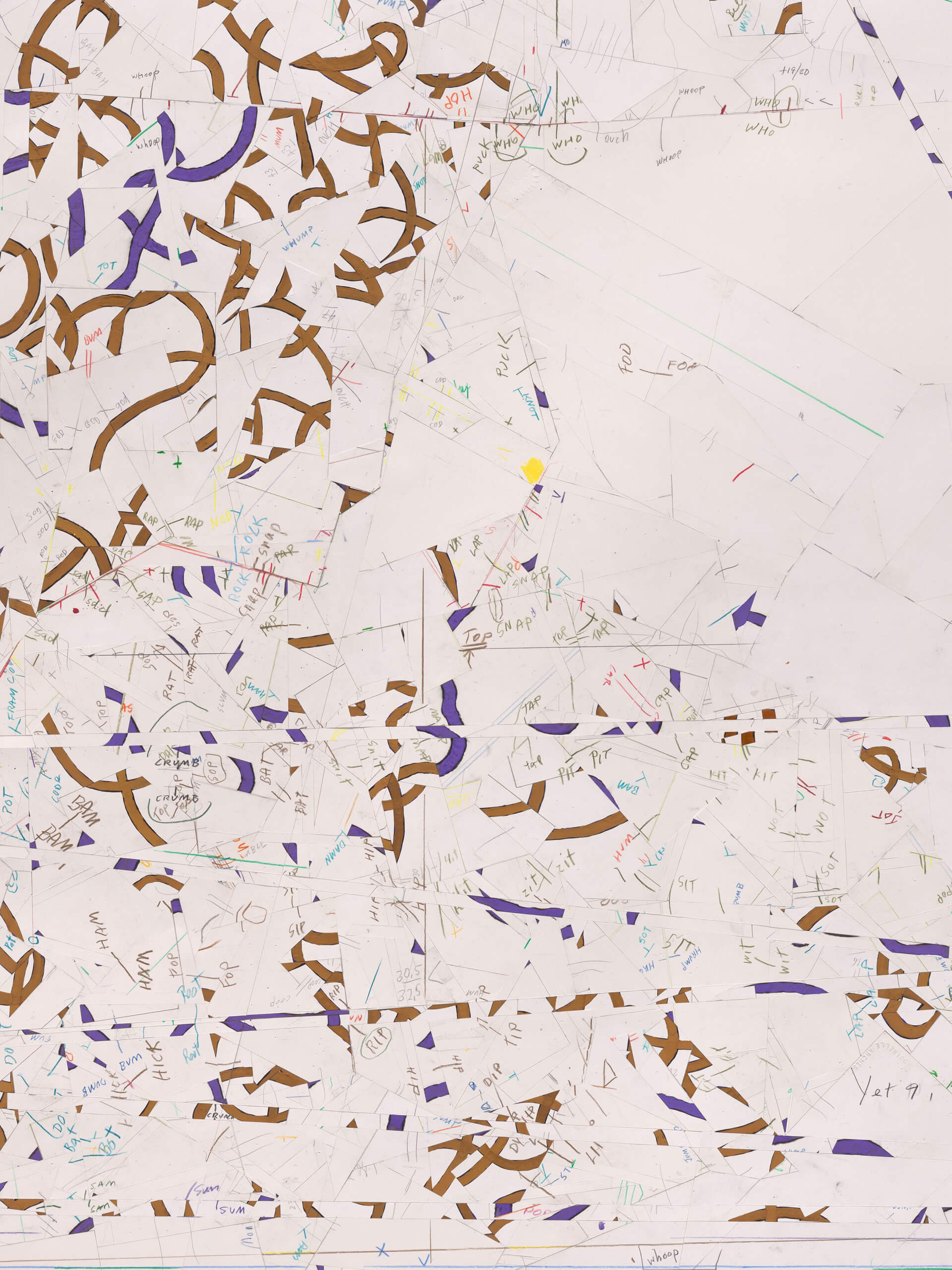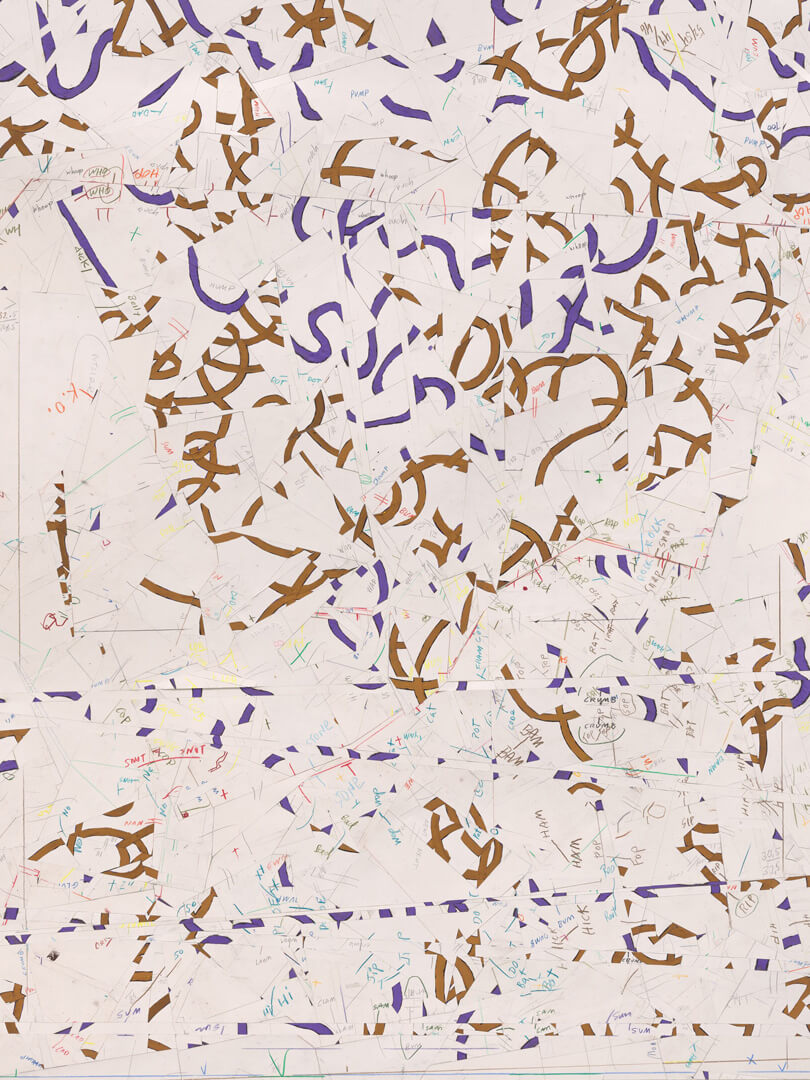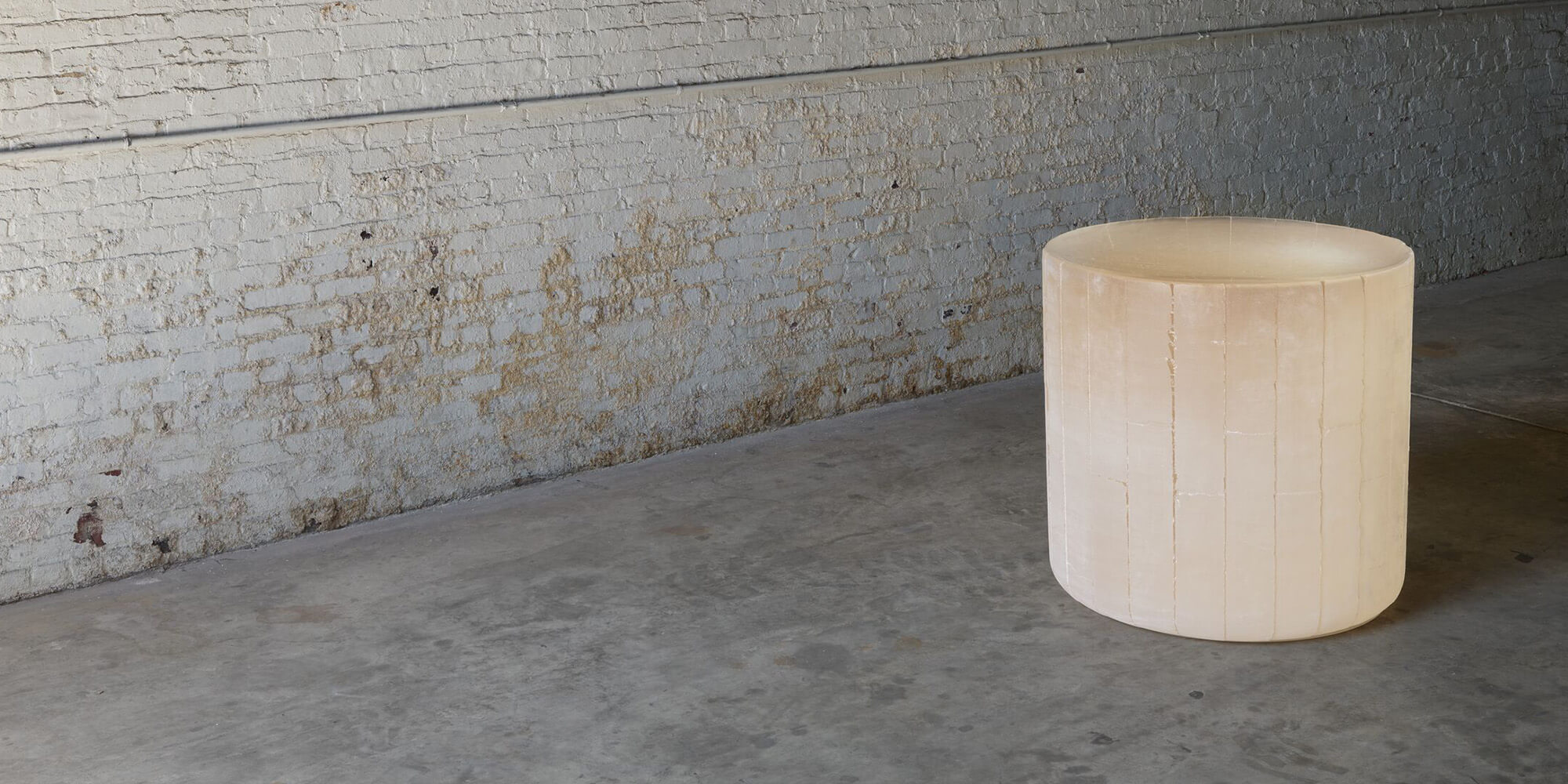
Roni Horn
2018 Solid cast glass with as-cast surfaces 91.4 x 95.3 cm / 36 x 37 1/2 in
Meticulously executed, ‘Untitled (‘And wherever you look you see the surrounding Kingston hills, one of the beauties of the island: freshening now into green after rain, blurred in the evening light, the folds as soft as those of an animal’s skin. Against such a view lay a dead mule, its teeth bared, its belly swollen and taut. It had been there for two days; a broomstick had been playfully stuck in its anus.’)’ (2018) is an outstanding example Roni Horn’s highly technical sculptures. Horn’s longstanding exploration of and engagement with cast-glass sculptures dates back to the mid-1990s and underscores her exploratory practice.
‘In the glass pieces, what fascinates me has a lot to do with the essence of something that has one appearance but is really something completely different. For example, glass is a (super-cooled) liquid, not a solid. It’s a pretty amazing thing that a material as ubiquitous as glass can masquerade like that. It’s like having a mask but the mask is identical to the real thing.’–Roni Horn
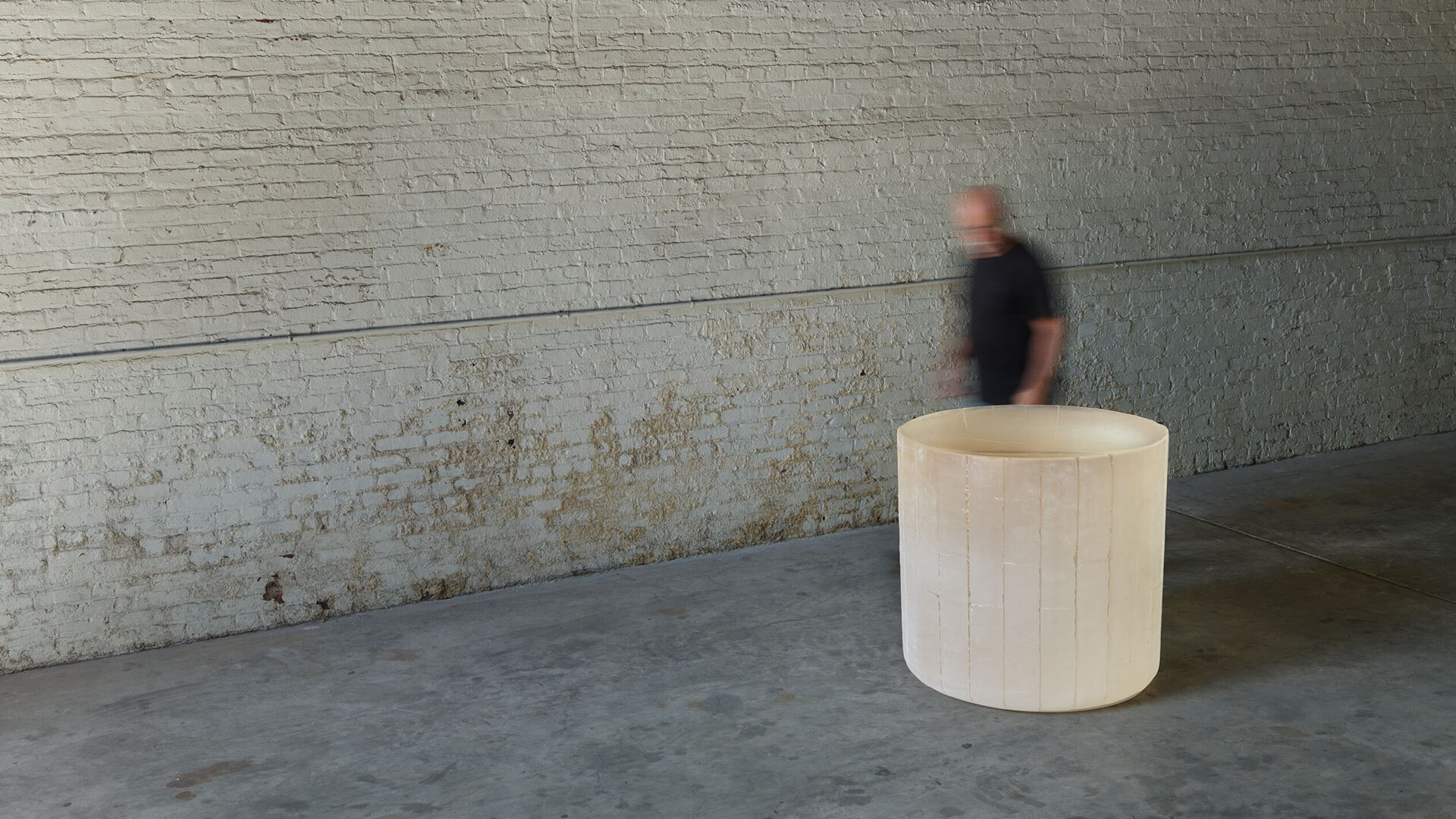
To produce these works, colored molten glass is poured into a mould, which gradually hardens over the course of several months. The resulting sculpture is highly textural: its sides are rough with the impression of the mould in which it was cast, while its top is smooth and glossy, resembling a crystalline pool of water or frosted block of arctic ice. The seductively glossy surface invites the viewer to gaze into the optically pristine interior of the sculpture, as if looking down into a body of water.
Yet 9
2017 / 2020 Powdered pigment, graphite, charcoal, colored pencil and varnish on paper 286.1 x 246.4 cm / 112 5/8 x 97 in 298.8 x 258.8 x 8.9 cm / 117 5/8 x 101 7/8 x 3 1/2 in (framed)
In ‘Yet 9’ the viewer’s gaze is drawn to the powerfully tactile surface and to the density of form at the centre of the composition, which dissipates radially towards the edges of the drawing. Upon closer inspection, cut out fragments of paper give way to undulating ribbons and strips that are architecturally composed and carefully placed, painted with vibrant purples and subdued burnt umbers. Bisecting lines and words simultaneously pull the viewer’s attention towards the center of the composition and outwards towards the edge of the drawing. The intricate detail in ‘Yet 9’ is deeply captivating, enticing endless examination.
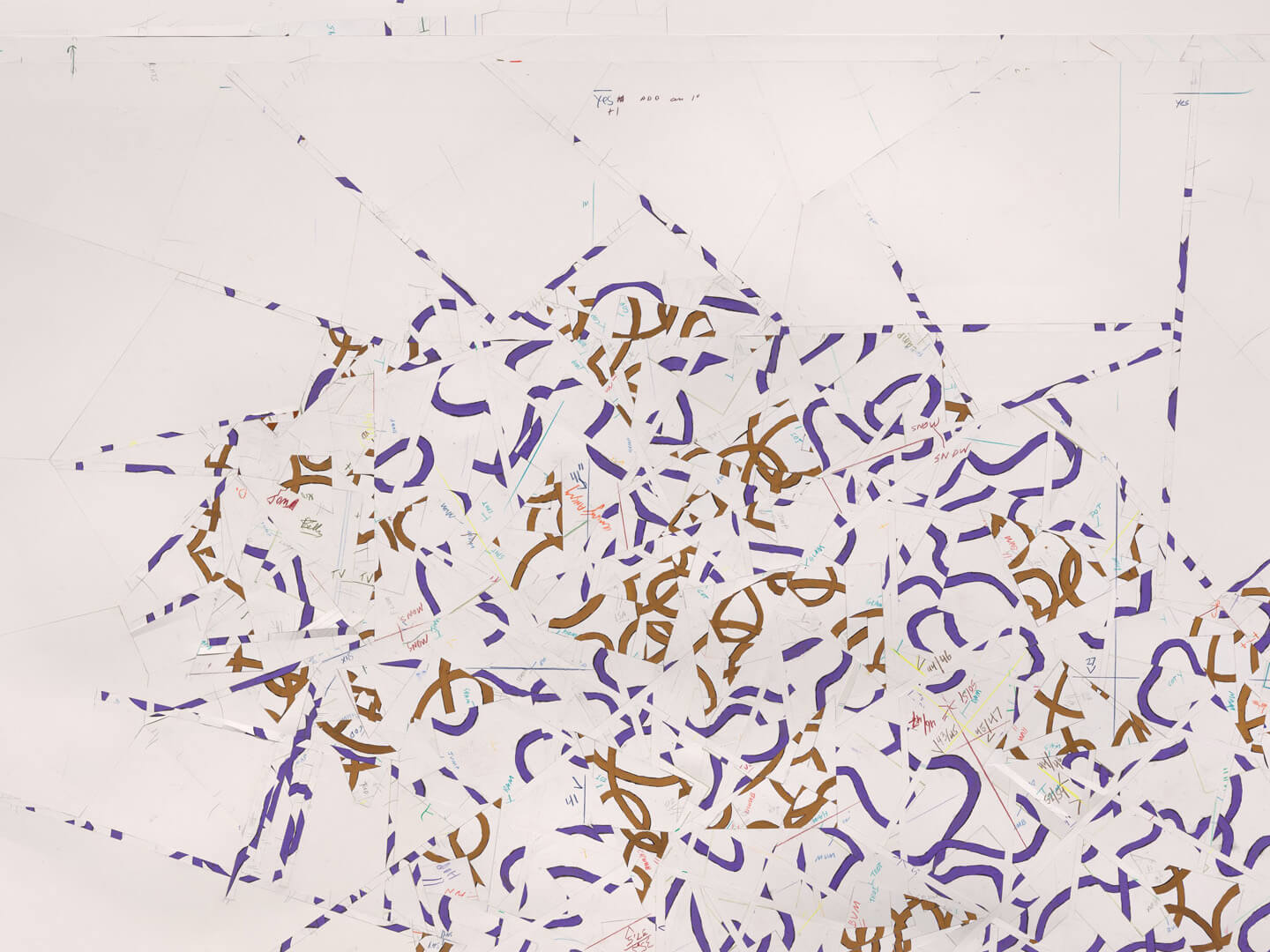
Horn first began making pigment drawings in the 1980s and has continued to do so ever since. Her early drawings were known for their intimate size, brilliant use of color and intensity. With each decade, her drawings have grown in scale and complexity, culminating in dynamic works such as her ‘Yet’ series (which currently consists of ten, unique drawings). To create these drawings, Horn applies powdered pigment and graphite into drawings called ‘plates’ (applying varnish once dry).

Roni Horn
Using drawing, photography, installation, sculpture and literature, Roni Horn’s work consistently questions and generates uncertainty to thwart closure in her work, engaging with many different concerns and materials. Important across her oeuvre is her longstanding interest to the protean nature of identity, meaning, and perception, as well as the notion of doubling; issues which continue to propel Horn’s practice.
